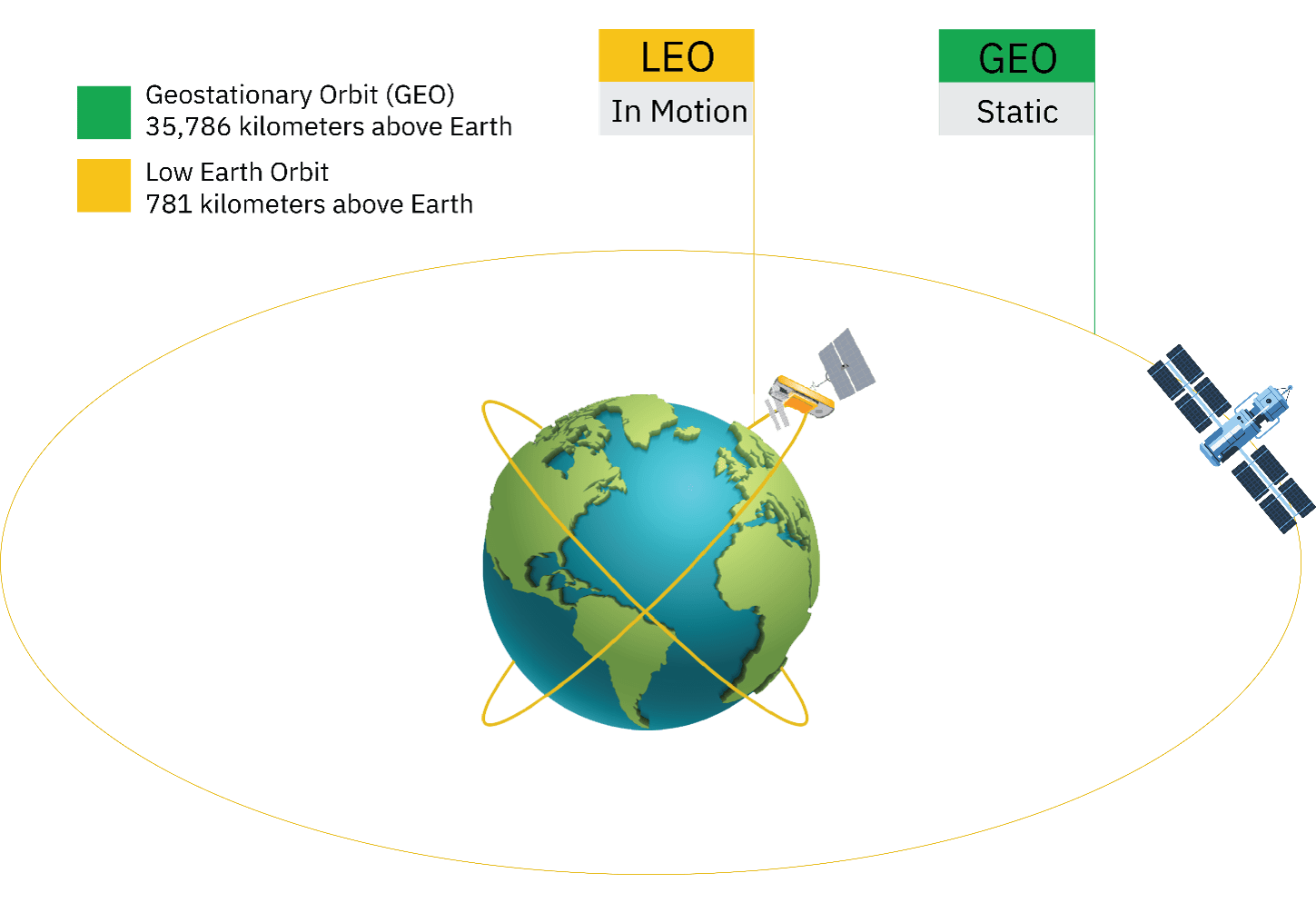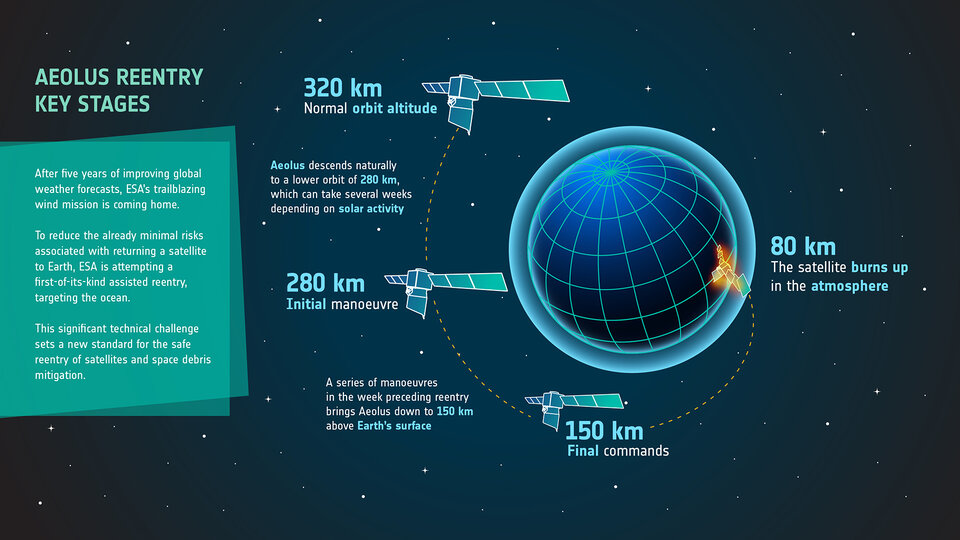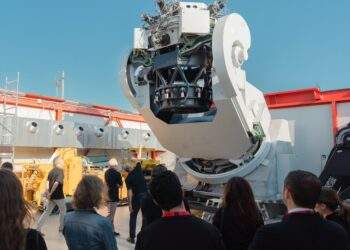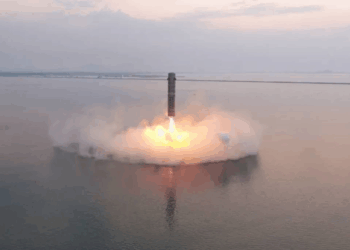Space debris represents one of the most pressing challenges to the safety of on-orbit operations. With tens of thousands of tracked objects and millions of smaller fragments in circulation, the risk of collisions is constantly increasing.
To better understand the current situation and mitigation strategies, I have met Tim Flohrer, Head of the ESA Space Debris Office, in the morning of 17 February in the ESA Space Safety Room, a technical facility recently established in ESOC, the European Space Operations Centre in Darmstadt, Germany.
We spent almost two hours talking about all aspects related to space debris, the current status and the future evolution of the risks and of the actions that are taken to mitigate this risk.
Puoi leggere la versione in italiano qui.
In last year’s ESA Annual Space Environment Report it was stated: “Without further change, the collective behaviour of space-faring entities (private companies and national agencies) is unsustainable in the long term.” So my first question is: are you worried?
I am, let’s say, slightly worried, for two reasons. The first one is that the guidelines for debris mitigation we established more than 10-15 years ago have not been fully taken up yet by the missions at least not to the level that we consider necessary; the second reason is that space traffic has in the meantime massively increased.
The guidelines I refer to are based on the situation we knew and predicted 20 years ago, while the reality of today is very different, much increased in terms of number of active spacecraft, compared to the predictions of 20 years ago. As an engineer I am actually used not to focus on worries, working rather on solutions. But I certainly have concerns about the situation.
Let’s look at the individual aspects then, starting with the LEO (Low Earth Orbits) environment. There is definitely since a few years a rapid increase in the number of active satellites. Are we still far from the risk of starting a chain of collisions that results in making LEO unusable for space activities? Will it ever happen, in your opinion?
We are facing today an unprecedented and revolutionary change in the way we are using LEO, mainly for commercial applications, especially in the area of high-bandwidth, low-latency communications networks. This field is today dominated by the Starlink constellation, but soon others will follow, such as the Amazon-Kuiper system or the Chinese constellations. Starlink is at 550 km altitude, the others will occupy other altitudes.

In addition, we see that the decreasing price of launches is making space commercial activities more affordable to a rapidly increasing number of actors. So, we see a huge diversification of players, experience, applications. Naturally we assume that it is in the interest of these operators to keep space usable, and therefore also to avoid the risk of catastrophic chains of collisions. Anyway, in this new and rapidly evolving situation, we can use our models to make long term predictions that show us where the risks of the situation going out of control are (from today’s perspective) the highest.
Indeed we see that in some altitudes we are reaching the point where this will happen – the question is only when it will happen. I am thinking in particular of the 800 km altitude orbits. In this area we have a high level risk for severe fragmentations (mainly from upper stages left there in the early times of spaceflight and not passivated). And not only the orbit contains a large number of debris, but at these altitudes the natural “cleaning” effect by orbit decay is very slow, so the objects remain there for many decades. At the same time the increasing use of this orbit by Earth observation satellites contributes to filling up the orbit, increasing the criticality of the situation.
If we look at the very low orbits, I mean those below human spaceflight altitude, that is below 400 km, they have a strong self-cleaning effect due to the drag of the higher atmosphere. So they are not the biggest concern of chain effect today, even in case of a collision – but if the operational use there increases the picture may also look different in the future.
In the 500 km altitude regime, where the density of operational objects is highest today, there is still flexibility to move up or bring down objects to achieve a decay. So it is mainly the 800 km orbit that today calls for urgent remediation actions.
The geostationary orbit (GEO) on the other hand seems to be developing towards a lower occupation. However there have been recent reports of catastrophic failures of GEO satellites. What is the current situation there is in terms of number of objects, collision risk? How do you see the trends in the coming years?
The launch rates in GEO are actually not decreasing, but it is true that they have not increased either since a number of years. So the occupation of this precious orbit is rather stable. Satellites there have naturally a very long operational lifetime, and operators are interested in increasing their lifetime even further.
From GEO you cannot compete with the LEO constellations in terms for instance of low latency, but it remains unique for its capability to have a wide overview over almost half of the globe. So both meteorology and communications satellites will continue, in my opinion, to make use of the GEO as a complement of their LEO satellites. If we’ll see a decrease in the use of GEO will be probably in the area of scientific satellites, a trend that has already started some time ago.
It is interesting to note that GEO is since a long time dominated by commercial operators. And the good news is that these operators have gradually increased their compliance to the debris mitigation guidelines, up to the 90% range. This is much more than what we observe for the operators in LEO.
Concerning the fragments, we know many of them as we track them since years, but we have also recently found new fragments that cannot be correlated with known fragmentation events, but probably exist since a long time. The problem is that, due to the distance, it is difficult to track small objects in GEO, both by radar and by telescopes. Today the lowest size of objects we can identify and track individually by telescopes is 30-50 cm. Statistically, by using statistical sampling methods, we can go down to know about 10-15 cm size objects.

When I was head of ESA’s operations department here, until about 4 years ago, we were operating in LEO about 10 satellites, and for these we had to deal, together with your team, with an average of 1 to 3 collision avoidance manoeuvres per month. And with a 5 to 10 times higher number of conjunction alarms that had to be escalated up to readiness for a manoeuvre that was not in the end executed. With the rapid increase in satellites in LEO of the past few years, you must have seen an effect on the collision risk and possibly the number of conjunction events. Can you quantify the situation today?
Today the ESA Space Debris Office provides its monitoring services to more than 20 satellites in LEO (not all from ESA). The ratio between escalated conjunction alarms and actually executed manoeuvres has not increased, we reckon it is still around 5.
In terms of number of conjunction events we indeed see an increase compared to a few years ago, but we also had an increase of data quality, that is the accuracy of the tracking of debris, and this to some extent seems to compensate for part of the increase of (fragment) traffic, so that the number of escalated alarms has increased less dramatically.
And this is the important parameter, since it is the escalation process that in heavily work-intensive. In the future we expect increasingly better tracking technologies to continue this improvement of the quality of the objects tracking data. Laser ranging is one of these technologies, which we are also experimenting on. I can also see room for commercial players to offer high quality tracking services for improvement of knowledge on the debris population.
On the other hand, what is actually making our job more difficult today compared to a few years ago, is the rapid increase of active satellites. Dealing with a collision alarm with an active object is much more complicated than with an inactive one (like a piece of debris or a dead satellite). Inactive objects stay on their orbit, and you can be sure they will not suddenly change it. On the contrary, an active object might already have a manoeuvre plan you are not aware of and is about to change its orbit. With tracking data you can only know its past and present orbits, not the future ones.
This means that handling a collision alarm with an active object requires heavy coordination and rapid exchange of information with the operator of the active object. And here you have to deal with an increasing number of players, many of which can be new, some of them even difficult to quickly identify and even to reach. The effort we have to put today in this coordination activities is enormous, and rapidly increasing. And the complexity of the process results also in increased collision risks.

Let’s now have a look at the risks on the ground. There have been increasing reports of debris re-entries that hit the surface, including some causing damages. Is the risk of getting hit by a space debris on ground significantly increasing? What is the trend?
Indeed, the problem of debris re-entry has changed a lot in the recent years. This is clearly shown in our annual report on space environment. If you maintain a large constellation of LEO satellites, you will have to replace them and disposed objects will be periodically re-entering. Therefore it is somewhat easy to calculate the order of magnitude of satellite re-entries from the replenishment traffic: it will for a full constellation be basically the same as the number of satellites launched.
For instance, if the number of satellites launched in a year is 2000, then you have to reckon you’ll observe in average 2000 re-entries per year. Already today we predict an average re-entry rate of a few satellites per day. These re-entries today are not a major concern for on-ground safety: they are generally rather small satellites and in general they are understood as fully demising, that is disintegrating and burning up in the atmosphere.
What is more of concern is heavy objects such as rocket upper stages, which should be subject of controlled re-entry, or big satellites with heavy tanks or optical payloads, which on the other hand are not very frequent today. Still, also controlled re-entries can fail and result in uncontrolled (higher risk) re-entry events.
There is however a concern linked to satellite demising, which is potential atmospheric pollution. Given that the numbers of launches and re-entries of satellites that disintegrate in the atmosphere is rapidly increasing, the amount of potential pollutants released by space activities in the high atmosphere may become a problem.
Today we start to quantify the material resulting from the satellite demising and their distribution in the atmosphere, but still do not know well what the resulting effects are. The space operators and the space debris experts must quickly get together with the atmospheric scientists community to build and validate models.
But if we reduce demisability, as a consequence the risk of ground accidents could increase. The only solution becomes then the implementation of controlled or at least assisted re-entry, in order to have some sort of control of where the satellite will fall, directing it of course over the oceans where the risk of damage on ground is close to zero. ESA already today has decided to impose the requirement of controlled re-entry capability on its satellites if the risk for casualty exceeds a certain threshold. This is a cost factor, of course, but it is a very responsible decision. ESA has also recently shown, with the assisted re-entry of ESA’s satellite Aeolus or the target re-entry of Cluster-1 (Salsa), that good end-of-life solutions to reduce risks can be found also for old satellites, which have not been designed for fully controlled re-entry.

Talking about responsible decisions, could you explain what the “zero debris initiative” is? And also, what is its status and are we seeing already concrete effects from it?
This initiative starts as one of the objectives listed in the Agenda 2025, a set of targets for ESA established by Josef Aschbacher when he became the Agency’s Director General in 2021. Limiting space debris found a mandate with ESA Member States, but we quickly realised that a zero debris initiative needs must be a community approach.
We found strong support from all players to facilitate such an approach: member States and national agencies but also commercial companies, from large system integrators to small-medium enterprises. The community decided to come up with a charter, a short two-pages political paper that contains also very measurable goals. ESA, as member of the community, has then used the charter to drive a change in its space debris mitigation policy and derive detailed technical requirements. This happened in 2023, so it was a remarkably fast process.
As community we have even developed a technology booklet on the needed technology that has just recently been released and we intend to maintain and update regularly. The ESA mitigation policy makes requirements applicable that approach this aspect from a very interesting direction: an overall in-orbit fragmentation risk budget is assigned to the specific mission.
Then the project responsible can decide what to do to stay within this budget: they can increase the reliability of the satellite, implement systems to de-orbit it, i.e. move it to different orbits after end of mission, improve the way it is operated to mitigate collision risk, or design it such that it can be towed away at the end of mission, or a combination of different measures.
In the process of discussing the zero debris initiative and its related space debris mitigation requirements it has however become clear to the community that one of the measures that will be unavoidable for long-term is the removal of big objects from space. It can be shown by simulations that even if you follow very strict debris mitigation strategies the density in some orbits – like the 800 km altitude orbit we already talked about – is too high and one day the cascade of collisions will happen. So you have to remove the big objects from these orbits.
We expect that one day the regulators will indeed become much stricter to impose a-priori debris mitigation measures, but even in that case you’ll never have 100% reliability of whatever system is implemented. Therefore, having the availability of an active debris removal capability will be always required to cover the gap and intervene in the (hopefully rare) cases when the mitigation measures will have failed.
From the technical point of view, systems to remove big objects from orbit are being designed and soon tested. But they are still far from operational in the larger scale. On the other side the aspect related to business model and cost – basically, who pays for the removal – are becoming addressed.
By the way, I want to mention a very novel approach, for the time being still in course of study and definition in the academic world, to measure the impact of your mission on the space environment. This is an activity led today by academia, such as Politecnico di Milano and EPFL, and supported by ESA. Basically, the objective is to define and measure a so-called “capacity” of the space environment. Then to measure how much a specific mission consumes this capacity. For instance, a cubesat flying at a few hundred km altitude will consume a relatively small part of the space environment capacity, whilst a large upper stage at 800 km altitude will be on the opposite side of the range in terms of capacity occupation. If you can assign a number to the “space environment capacity consumption” of the specific missions, you can provide invaluable indications to the mission designers, but also to the policy drivers.
This is a similar approach to what is used to measure the impacts of human activities on climate change. It is a very difficult task and demands combination of various models, but if successful and recognised, it can be used to drive measures to try and achieve in the end a sustainable use of the space environment.























































